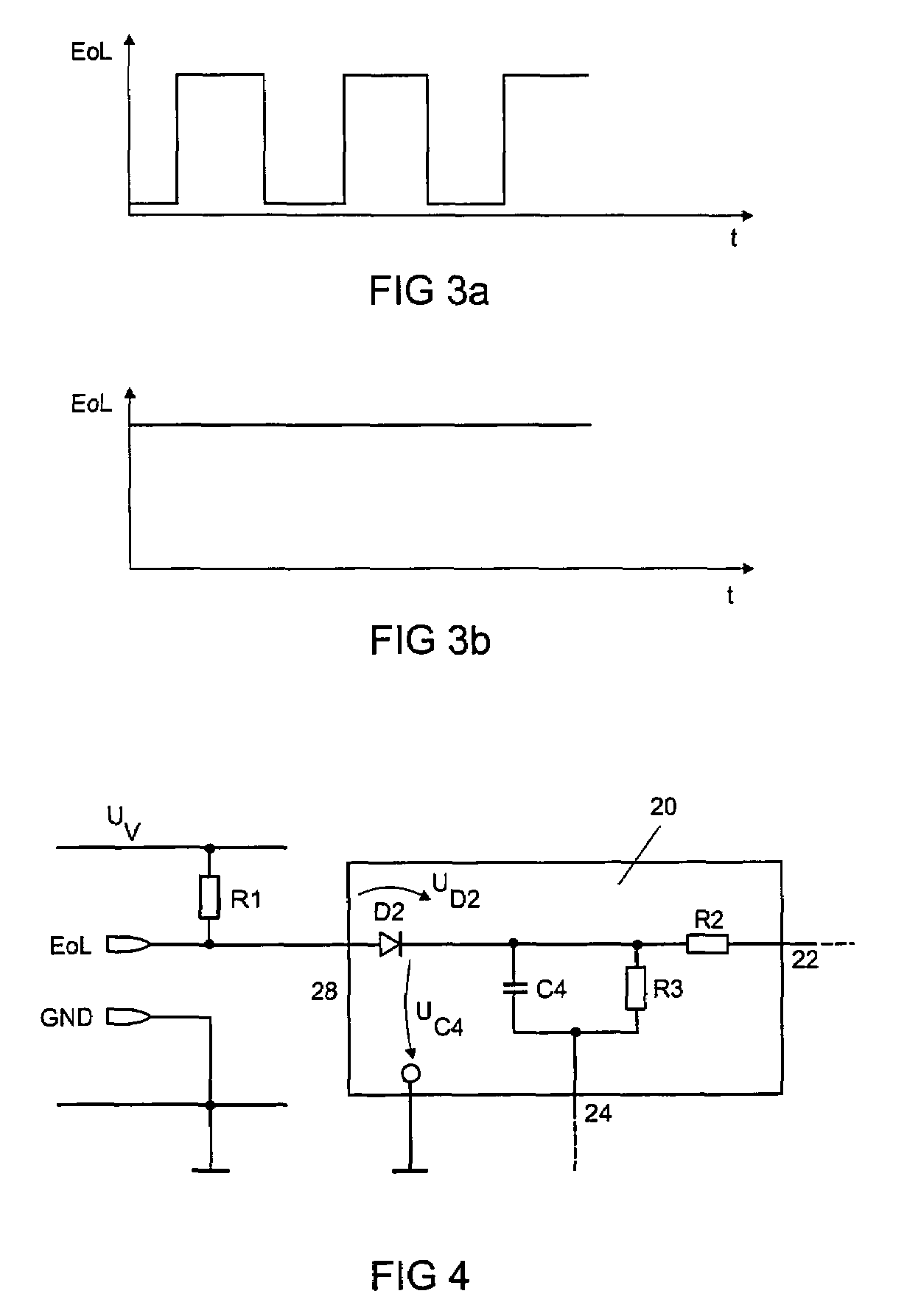Electronic ballast for a lamp
a technology of electronic ballast and lamp, which is applied in the field of electronic ballast for lamps, can solve the problems of minimal error owing to component tolerance, small measurement error, and maximum reliability of results, and achieve the effect of reliable eol detection
- Summary
- Abstract
- Description
- Claims
- Application Information
AI Technical Summary
Benefits of technology
Problems solved by technology
Method used
Image
Examples
Embodiment Construction
[0021]FIG. 1 shows a schematic illustration of an electronic ballast according to the invention for a lamp. Since such electronic ballasts are generally known, only the part relevant to the invention is illustrated schematically for reasons of clarity. In this case, a first switch S1 and a second switch S2, which between them define a center point M, have the so-called intermediate circuit voltage UZW applied to them. The center point M is coupled to a first connection A1 of a lamp La via an inductance L1. Moreover, the connection A1 is connected to the ground potential via a coupling capacitor C1. The second connection A2 for the lamp La is coupled to the ground potential via a coupling capacitor C2. An inductance L1 is coupled between the center point M of the half-bridge circuit and the first connection A1 for a lamp. The electronic ballast comprises a control unit 14, which drives the switch S1 via an output 10 and the switch S2 via an output 12 in a known manner in opposition u...
PUM
 Login to View More
Login to View More Abstract
Description
Claims
Application Information
 Login to View More
Login to View More - R&D
- Intellectual Property
- Life Sciences
- Materials
- Tech Scout
- Unparalleled Data Quality
- Higher Quality Content
- 60% Fewer Hallucinations
Browse by: Latest US Patents, China's latest patents, Technical Efficacy Thesaurus, Application Domain, Technology Topic, Popular Technical Reports.
© 2025 PatSnap. All rights reserved.Legal|Privacy policy|Modern Slavery Act Transparency Statement|Sitemap|About US| Contact US: help@patsnap.com



